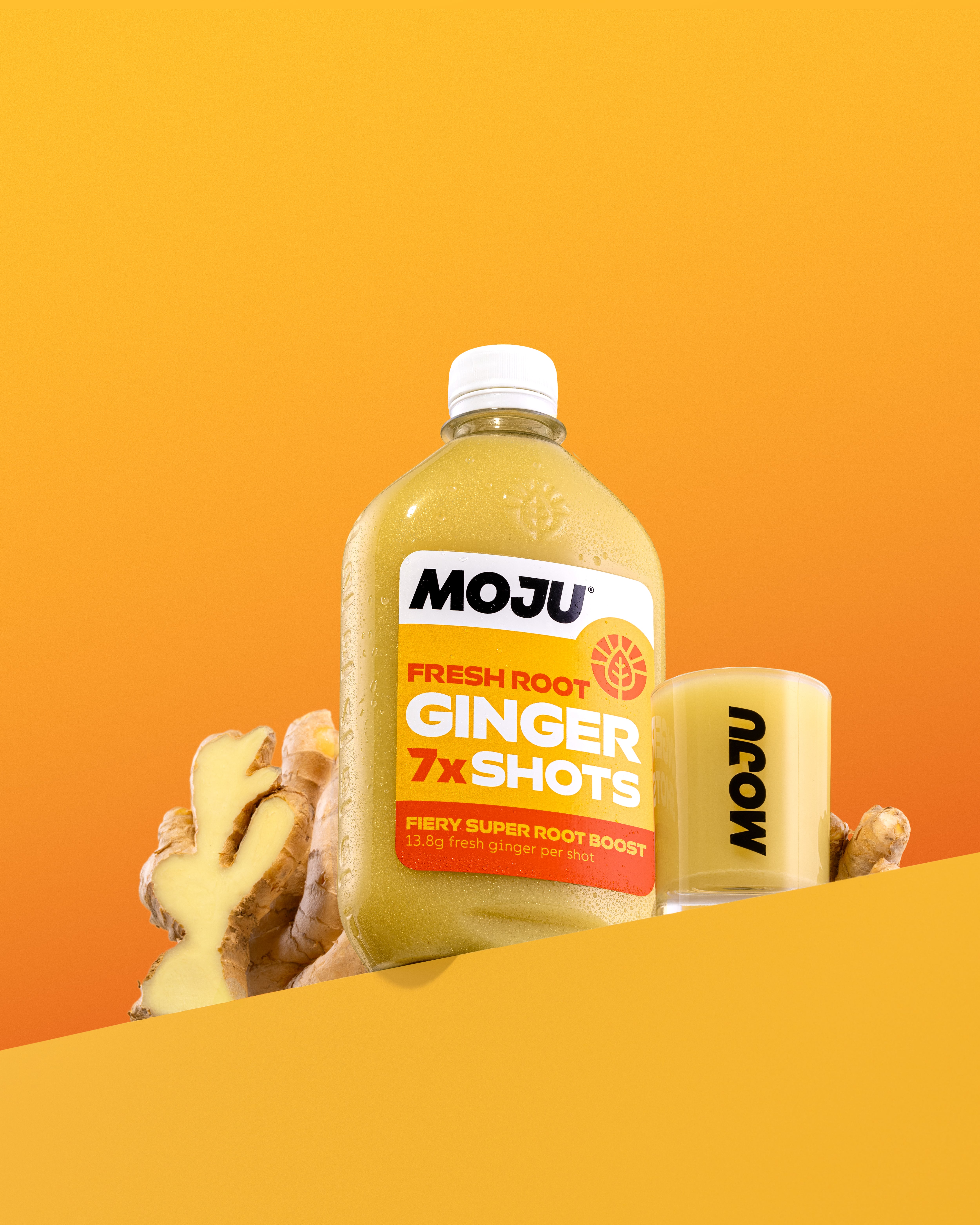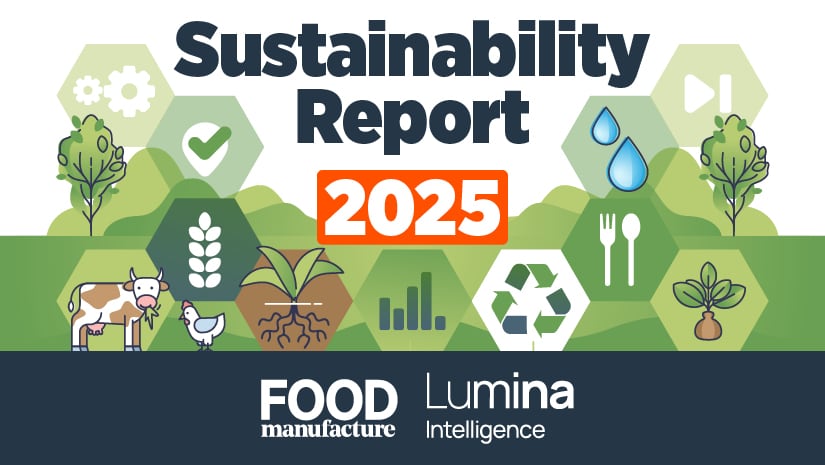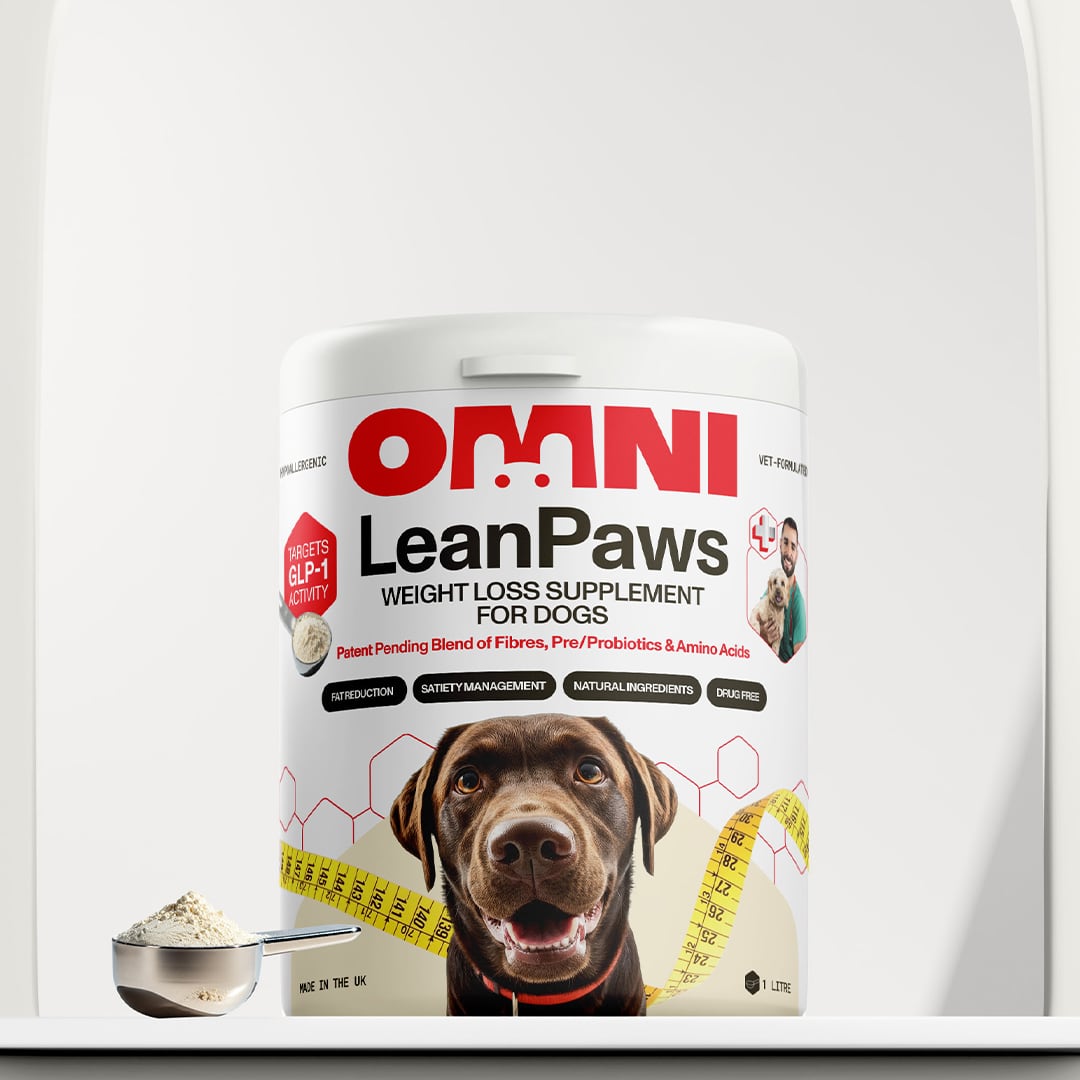Our big annual trends report identified a number of key trends driving food and drink in 2025, including naturalness, function, simplicity, and global cuisine influences, including Southeast Asia.
As September draws to a close, we take stock with a mid-point trends review.
Health-maxxing
Health continues to be a central focus for food and drink innovators, with protein, fibre and portion sizes all having a big part to play.
Protein power
Within the dairy sector, there has been a notable shift towards function, with many opting for cheese that is naturally high in essential nutrients and protein.
Research from The Knowledge Bank and Mintel underscores the popularity of cheese among Brits, with their research showing not only do the majority (94%) eat cheese, but 65% do so more than once a week.
But cheese is also being seen as ‘something special’ – almost two-thirds say cheese makes a dish feel premium and over half say it makes the occasion itself special.
Social media has been a key driving force for Britain’s ongoing love affair with cheese. Close-ups of ‘gooey cheese pulls’ and viral videos of ‘picky teas’ built around small sharing bites or showing off extravagant cheese and charcuterie boards are all over the likes of TikTok. In fact, nearly a quarter of shoppers have said they bought cheese after seeing it featured online.
Retailers are responding, with Marks & Spencer branding itself as “the home of picky bits”, while Tesco is actively searching for more artisan cheesemakers to fill its shelves. Waitrose also highlighted “Picky Teas” in its latest Food & Drink report, pointing to the rising popularity of flexibility and choice.
Similarly, Greek yoghurt and Kefir have also been increasing in popularity due to protein content, gut-health appeal and clean ingredients deck.
Authentic Greek Yogurt has shown strong growth year on year, rising by 39% in volume vs 2024, according to Kantar data (total yoghurt, UK retails, 52 w/e 15 June 2025 vs 2024).

“With its impressive short ingredients list and high protein content, it’s an ideal fit for the clean label, natural product trend,” commented Charlie Schofield, marketing controller at Eurilait.
“Kefir, part of the dynamic and fast-growing yogurt drinks segment is showing the same shift. Like authentic Greek yogurt, kefir is naturally fermented and typically free from additives, aligning well with consumers’ rejection of ultra-processed foods.”
But it’s not just dairy that’s benefitting from the protein wave, this has also been helping to drive the uptake of meat.
“Protein is still the go-to, and we’re seeing that play out not just in meals but in snacking too, where people want healthier, high-protein options that don’t compromise on taste or convenience,” said Jason Winstanley, head of research and insight at Pilgrim’s Europe.
“A great example is our new Fridge Raiders Chicken Grills range, which launched in March – flame-grilled mini fillets available in bold Tandoori and Roast Chicken flavours. They’re packed with protein, HFSS compliant and under 50 calories per fillet, making them perfectly aligned with what health-conscious consumers are asking for.”
Oscar Mayer’s director of consumer, Andrew Dyer agreed: “Protein remains a key priority for consumers; in 2025 we have continued the pattern of high protein product variants launching across different categories.
“Within the chilled meal category, we have seen growth of over 15% in value sales year-on-year for The Gym Kitchen brand, attracting a younger shopper into the chilled meal aisle.”
Fibre frenzy
While protein has been a big star for a few years, fibre is also getting more attention and its casting a spotlight onto beans, legumes and seeds.
“One of the most unexpected shifts has been the rise of fibre-maxxing, a growing consumer trend for increasing fibre intake for better health,” said Matt McAuliffe, brand, futures and quality innovation director at the Compleat Food Group.
“For years, protein has dominated the conversation and while it is still a priority, fibre is now emerging on a similar scale. It’s a trend we didn’t necessarily expect to take off so quickly, but it’s being driven by greater awareness of the role fibre plays in gut health, digestion, blood sugar regulation and satiety.”
The term ‘maxxing’ has been popularised via social media and is used to describe the optimisation of one aspect of life.
“While there’s always a concern about nutritional advice being oversimplified or taken to extremes online, fibre-maxxing stands out as one of the more sensible wellness trends. In the UK, fibre intake is still well below recommended levels, and consumers are beginning to understand how it supports long-term health and metabolic balance.
“For the industry this presents an opportunity to develop functional and flavourful products that help close the fibre gap in everyday diets.”
Jacqui Passmore, marketing lead West EU & AMEAP at Dawn Foods agrees functionality has boomed this year and will continue to do so. She pointed to increased interest in breads and cakes that have been fortified with additional protein, as well as the addition of high fibre grains, flaxseeds and ferments to help build on health qualities.
“As part of this health halo, reduced sugar is still on the agenda with many bakery manufacturers now looking to produce products that are low in sugar, high in protein and added fibre.”
The rise of GLP-1
Originally developed to treat type 2 diabetes, GLP-1 medications and their widespread availability have accelerated conversations around appetite, nutrition and food choices.
“We’re seeing smaller portions, fewer snacks, and more functional meals, which could lead to a reduction in overall food and drink consumption. It’s too early to say how big the impact will be, but there’s potential for seismic shifts in consumer behaviour,” commented McAuliffe.
“What’s particularly interesting is the growing demand for foods that naturally support GLP-1 production through diet. Consumers are actively seeking out ingredients proven to help stimulate GLP-1 production in the body: high-fibre foods like oats and legumes, fermented products such as kefir and kimchi, healthy fats like avocados, and bitter foods including cavolo nero and grapefruit.
“This shift is opening new avenues for innovation. It’s guiding our NPD strategy towards products that are not only satisfying and nutritious but support metabolic health in a holistic and enjoyable way. It’s becoming increasingly important that we help consumers meet their health goals without compromising on taste and convenience.”
Simplicity and authenticity
The demand for healthier foods is driving a shift towards more natural products.
“Naturalness and simplicity are no longer trends, they’re baseline expectations. Products that actively support wellbeing, with ingredients people recognise and trust, are more likely to drive basket value,” affirmed Jon Marchant, MOJU marketing director.
“MOJU shots, for example, add value to healthy shopper missions, introducing beneficial and nutrient dense ingredients, like ginger and turmeric into more diets by making them even more accessible through their lower sugar per serving, convenient shot format.

“They command a premium price point while delivering vitality and immune supporting health benefits, with our hero ginger variant having the highest rate of sale within the total juice and smoothies category.”
Within bakery, Passmore says there has been increased use of fruit and other natural flavours to add sweetness to finished products.
“The current strategy is for using more natural sources of sweetness, so the indulgent taste of the finished product is not compromised,” she said.
This is also playing nicely into the fibre trend, as Passmore explains: “The interesting point with HFSS is that where sweet bakery products have a high fruit content or high fibre content, the HFSS score is reduced, and this is a point that bakers seem to be capitalising on.”
She continues: “As well as increased use of high fruit content fillings, which are also an additional source of fibre, bakers are turning to fruit compounds to cost-effectively add sweetness to their bakes. Compounds are natural flavours pastes made with concentrated fruit juice, extracts and or fruit puree. Opting for compounds in flavours such as yuzu, passionfruit, mango or cherry available from Dawn, for example, not only means bakers can tap into the latest food flavour trends but potentially bring down the HFSS score without relying on artificial sugar replacers.”
For Pilgrim’s Europe, simplicity continues to shape its approach to NPD, with lean protein such as chicken and turkey at the heart.
Winstanley explained that although specific cuts like pork belly has performed well – as a result of warn weather and BBQ occasions – chicken is seeing the most consistent growth. Kantar data (12 weeks to 15 July 2025) shows chicken as the strongest performer in both value and volume terms, outperforming all other proteins.
Schofield agreed: “Some of the best progression in the cheese sector are from premium and more authentic or traditional products. Speciality cheese in general performs strongly (+4.3% in volumes), largely outperforming the overall cheese category.
“This growth is mostly due to soft continental, with a strong performance from Mozzarella. Brie and Camembert are also in growth. So do cheeses with different use such as feta/salad cheese, halloumi and paneer.”
This drive for simplicity is also being linked to trust. For Oscar Mayer, this has encouraged the business to partner with well-known brands.
“This brings about simplicity and trust in a category which historically this has been lacking – our successful launches of Cathedral City and Pataks chilled meals have been testament to this, where new shoppers are buying into the category, driving incremental sales,” said Dyer.
“Since launching in April 2024, Cathedral City’s chilled meals have generated over £7 million in value sales to become the third-largest brand within the chilled ready meals category,1” he added.
Bold flavours
Bold, flavour-forward products are thriving – think hot honey, which has been appearing in all manner of categories, from BBQ to biscuits to toasted sandwiches.
“Swicy is such a hero for the flavour trends world - it just keeps growing. Jaffa Cakes even launched a hot honey flavoured product; if McVitie’s are tapped into the trend, you know it’s gone mainstream! Same story for Eastern influenced flavours - Yuzu has finally made it’s mark and again McVitie’s launched a Yuzu flavoured Jaffa Cake,” said Adam Cohen, marketing manager at flavour specialists I.T.S.
Whilst not a bold flavour, Cohen noted that Melon has also gone wild, with wholefoods featured it as its flavour of the summer and most beverage brands releasing a watermelon or melon variant flavour.
“Global flavour influences are also shining through, with regional Americana-like Texan style and Cajun, as well as Korean barbecue, Middle Eastern and Latin inspirations such as Shawarma and Chimichurri,” added Winstanley.
Moreover, within meat and poultry, Pilgrim’s Europe is seeing a rise in named chillies being called out, with varieties like Guindilla, Japoneño, Ancho and Piquillo gaining prominence.
“These peppers bring authenticity and excitement to dishes, from smoky ancho marinades to the tangy bite of guindilla. The popularity of global street food and food festival culture is accelerating this trend, as consumers are more willing than ever to try regional chilli flavours and look for them called out on-pack,” explained Winstanley.
The increase interest in bold flavours has also inspired Oscar Mayer’s new branded products, including its launch of Pataks Indian chilled meals.
MOJU’s marketing manager agrees that spice and ‘warming’ flavours are in – especially the likes of ginger, chilli, turmeric and cayenne.
“Bold, spicy flavours are trending in health-led categories in particular, where consumers not only seek more adventurous, sensory experiences, but also a perceived health payoff - for example, amplifying sensations of vitality, heat and efficacy,” said Marhant.
The Spicy Piña Immunity shot is one of the most recent additions to MOJU’s range and is said to provide daily immune support through a natural source of Vitamin C and D3, whilst giving consumers that spicy kick.
Whilst there is demand for bold, spicy flavours, this is being teamed with more familiar and ‘approachable’ Western formats and flavours.
Value 2.0
Consumers are still being careful with their money, resulted in dining out taking a hit. This has created a great opportunity for retail to innovate in the indulgent/experience-led space.
But value no longer refers to price alone, with many consumers redefining what ‘worth it’ means.
“While some shoppers still prioritise economic alternatives – supporting the case for affordable and reliable new product development – many are paradoxically willing to pay a premium when they believe it is justified. Perceived value is what justifies it: they want more quality and authenticity, more health-conscious choices, more convenience and moments of indulgence,” Eurilait’s Schofield said.
She explained that for the dairy category this has encouraged diversity within cheese types and formats: “Consumers are open to trying new types of cheeses, new formats, new ways to use cheese and dairy, gourmet offers.
“This includes discoveries from abroad – such as alpine cheese that is emerging in the continental category – new formats such as seasonal baking camembert or halloumi kebabs as well as closer to home, local and regional varieties.

“Social media is a great source of inspiration, helping contribute to this discovery trend. The Dubai chocolate trend is a striking example! The pistachio craze is no longer limited to chocolate – this year M&S launched a pistachio and honey baking feta for its summer range.”
Now more than ever, value is key for them. But value no longer refers to price alone. Many consumers are redefining what “worth it” means.
While some shoppers still prioritise economic alternatives – supporting the case for affordable and reliable new product development – many are paradoxically willing to pay a premium when they believe it is justified. Perceived value is what justifies it: they want more quality and authenticity, more health-conscious choices, more convenience and moments of indulgence.
The AI explosion
With trends developing quicker than ever, it’s never been so important to try and stay ahead of the game. However, we have seen from recent administrations within the start-up world that being unique doesn’t always pay off.
“Sometimes product developers can be too early; for a mainstream brand, they will want to wait until trends have become established before jumping in,” noted Cohen.
“Matcha is a great example of this. The trendy green powder isn’t hugely new in 2025, but now it has gone through a period of maturing and building its profile in high street coffee shops, the food and drink brands are tapping in for retail launches.”
The industry is becoming increasingly personalised, according to Cohen, who notes the move away from ‘one-size-fits-all’.
“Brands are focusing more on the needs of their target market and then building their tribe and audience.”
One of the trends among businesses is to use artificial intelligence (AI) to help keep tabs on what’s hot.
Eurilait for example has recently invested in Tastewise – a platform which uses AI to identify trends. Schofield explains this has helped the business make sense of the vast amounts of data we now have access to.
“Combined with other sources, such as traditional market data, AI tools help us gain a clear perspective and importantly help us look forward at emerging trends.”
Oscar Mayer and Pilgrim’s Europe are also both using AI to help them keep pace.
“We’re already harnessing AI in really valuable ways, especially in how we analyse market data. It’s enabling us and our partners to identify and interpret trends much more quickly, comprehensively and efficiently than ever before. Those insights are then feeding directly into our product development, helping us anticipate consumer demand with far greater precision,” said Winstanley
Dyer explained that alongside NPD, Oscar Mayer is also using AI technology to “very quickly create product or packaging ideas” which it can test with consumers, speeding up its innovation pipeline.
References
- Kantar MWP, total chilled ready meals, % share of spend OL / brand, 52 w/e 23 March 2025





